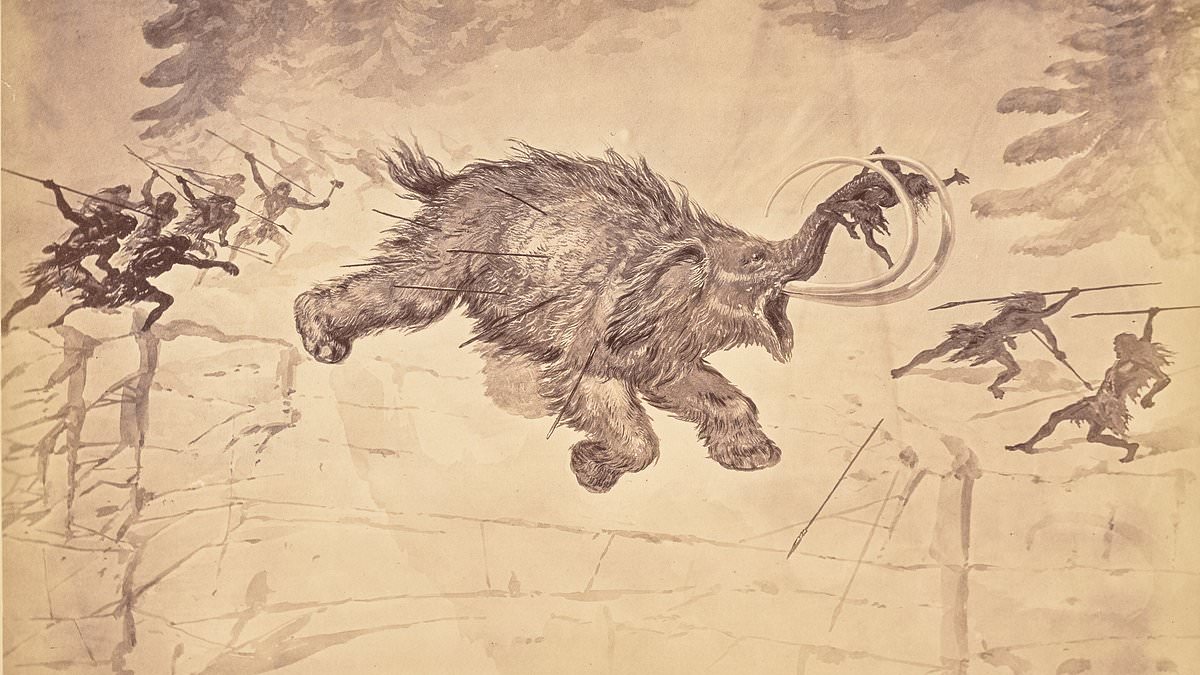It’s well known that our ancestors had the capacity to bring down large prey such as mammoths thousands of years ago.
But exactly how early humans killed the enormous beasts has remained somewhat of a mystery.
It could be that they threw spears tipped with razor-sharp rocks, or surrounded and jabbed at their prey, or even scavenged wounded animals.
Now, a new study indicates that the answer might be none of the above – instead suggesting that early humans may have braced the butt of their pointed spears against the ground and angled the weapon upward in a way that would impale a charging animal such as a mammoth, bison or saber-toothed cat.

Scientists have discovered how ancient humans were able to take down giant beasts some 13,000 years ago
The force would have driven the spear deeper into the predator’s body, unleashing a more damaging blow than even the strongest prehistoric hunters would have been capable of on their own.
Drawing upon multiple sources of writings and artwork, a team of archaeologists reviewed historical evidence from around the world about people hunting with planted spears.
Next, the team ran the first experimental study of stone weapons that focused on pike hunting techniques, revealing how spears react to the simulated force of an approaching animal.
Read More
Remains of massive creature that lived alongside the world's first humans discovered in Iowa

Once the sharpened rock pierced the flesh and activated its engineered mounting system, they say, the spear tip functioned like a modern-day hollow-point bullet and could inflict serious wounds.
The team, from the University of California, Berkeley, said prior experiments suggest throwing stone-tipped spears would have felt ‘like a pinprick’ to a 9-ton mammoth.
They added that people would have had a limited number of suitable rocks to work with while traversing the land, and might go hundreds of miles without access to the right kind of long, straight pole from which to fashion a spear.
Therefore, it stands to reason they wouldn’t want to risk throwing or destroying their tools without knowing if they’d even hit the animal, they said.
Co-author Jun Sunseri said: ‘The kind of energy that you can generate with the human arm is nothing like the kind of energy generated by a charging animal. It’s an order of magnitude different.’
Writing in the journal Plos One, the researchers said their findings will reshape how we think about what life was like roughly 13,000 years ago during the Ice Age.
In the coming months, the team plans to further test its theory by building something akin to a replica mammoth.
Using a type of slide or pendulum, they hope to simulate what an attack might have looked like as a planted pike made impact with a massive, fast-moving mammal.
